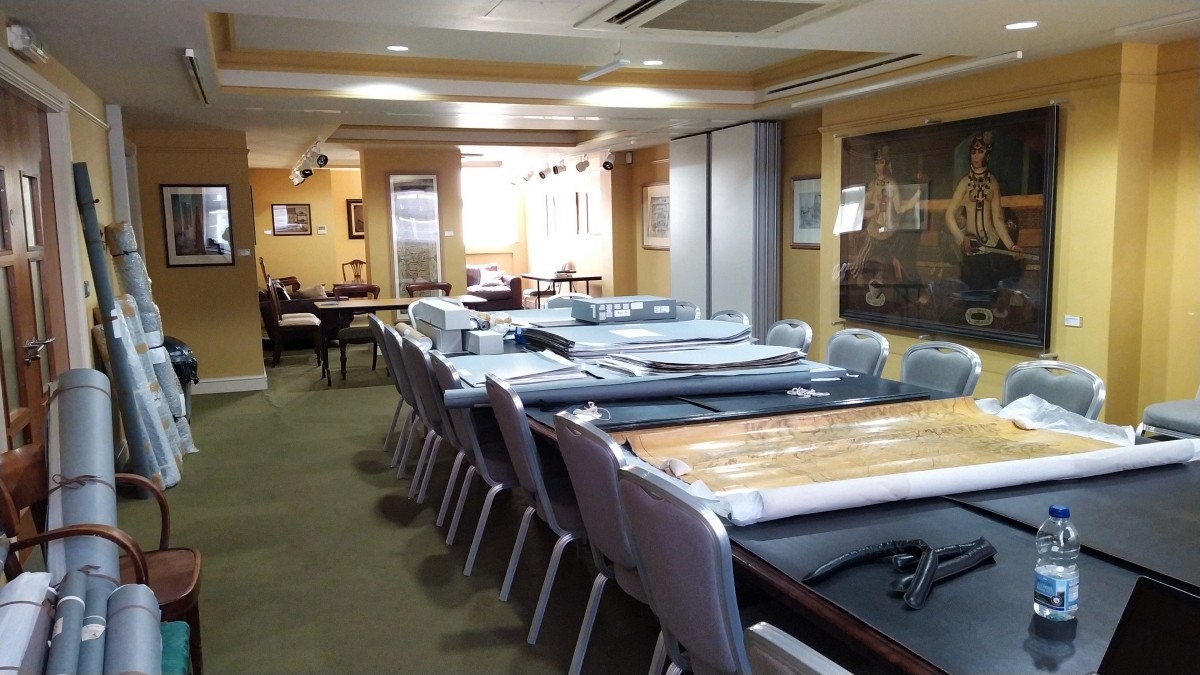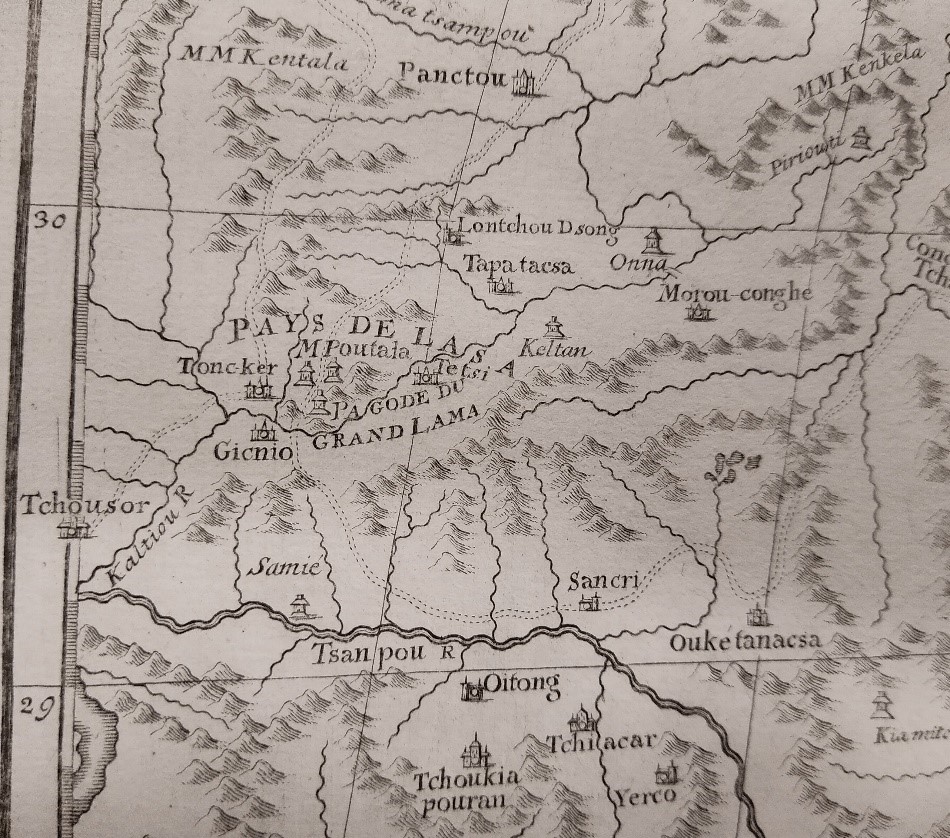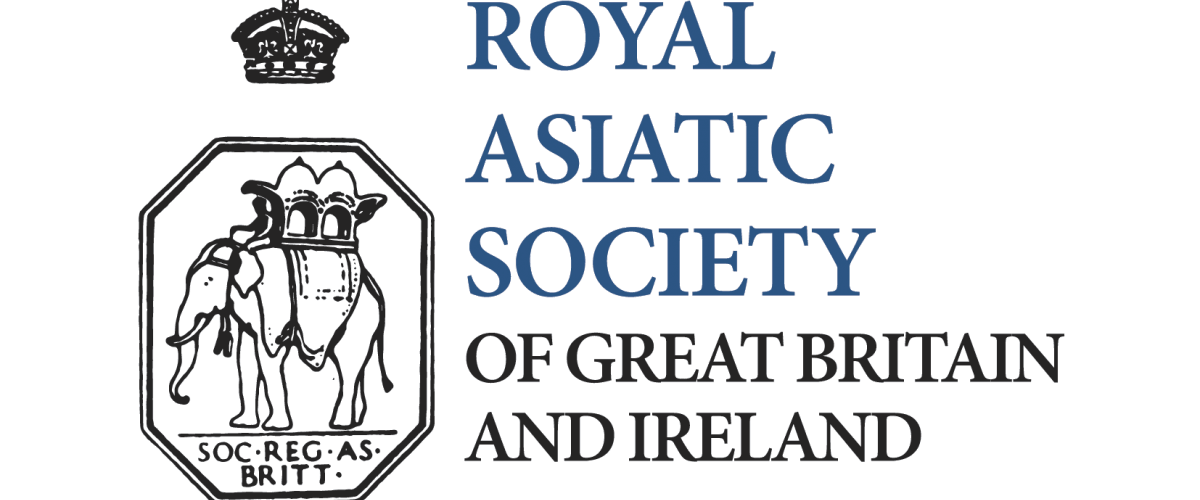‘Mapping’ the Society’s collection of cartographic material
This week’s blog is written by Philip Jagessar who has recently completed his PhD on the Linguistic Survey of India’s mapping. Philip has been awarded a J B Harley Research Fellowship which supports research projects around the history of cartography and map collections in the UK. As part of this fellowship, Philip has been working with the Society’s map collections to make them more accessible whilst also examining the acquisition and mobilisation of maps across the Society’s history.
Over the course of two centuries the RAS has collected a substantial number of maps and atlases, reflecting its interest in Asia and elsewhere. Many were gifted by members, whereas some were inherited from fellow institutions such as the Central Asian Society (now the RSAA) and the Royal Society. Others were acquired directly from mapmakers, notably the Survey of India, while some maps were produced for the Society’s journal and monographs. Yet this significant map collection has seldom been studied as a ‘collection’ and has largely survived in an uncatalogued, and underutilised, state.
Since July, with the generous support of a Harley Fellowship, I have been investigating the Society’s maps to establish how it came to be a collection and how they were employed by the Society and its members.
The first steps involved going through all the maps, identifying when they were produced and building a picture of the collection’s geographic scope. Unsurprisingly, the collection is dominated by maps of South Asia, Central Asia and the Middle East. But we also find maps of Canadian provinces and the UK interspersed among maps of Arabia. On the other hand, their production dates align neatly with the Society’s existence, ranging from Indian Atlas sheets published in the 1820s to maps of the Middle East from the 1950s. There are very few maps from before the Society’s formation and up-to-date maps, of India for example, were regularly acquired throughout the 19th century.

The next step was figuring out how and when the maps were acquired by the RAS. Donation registers have proven particularly useful, recording that the aforementioned Indian Atlas sheets were presented to the Society by the East India Company in the late 1820s and early 1830s, soon after they were published. Other maps and atlases were inherited from members or other individuals, usually reflecting their area of interest or expertise. For example, Brian Houghton Hodgson’s fine copy of D’Anville’s Nouvel Atlas de la Chine, one of the first to depict Tibet, was donated to the Society after his death.


The Society also has an assortment of late 19th century maps of the Caucasus which were formerly owned and used by John F. Baddeley (1854-1940), who wrote extensively on the region including a history of The Russian Conquest of the Caucasus (1908).
The RAS map collection not only reflected the interests of the Society at large but the individual, and eclectic, backgrounds and interests of its membership. This is evident in the types of maps found, from naval charts to archaeological, geological and linguistic maps. Acquisitions from other
Philip Jagessar
Societies enhanced the collection in the 20th century, continuing a tradition of sharing and circulating maps among institutions.
The next stage of the investigation, possibly the most challenging depending on the surviving evidence, will consider how maps were deployed and used by the Society in lectures, meetings and in its publications. This introduction to the project is the first of a series of blogs about the map collection. Subsequent blogs will highlight the most interesting, unusual, or curious maps and atlases held by the Society.
Bayly Prize:
Following on from last week’s announcement of the Bayly Prize winner, one of the finalists, Stefano Gandolfo has shared an overview of his doctoral research on ‘The Streams of Knowledge: Organising the Siku Quanshu’.

Stefano pursued his undergraduate studies at Yale, majoring in Philosophy and Economics, along with studying Chinese. He completed his master’s degree in Chinese Philosophy at Peking University (taught in Chinese) and then proceeded to Oxford for his doctorate. After completing his studies, Stefano undertook his military service in Greece where he served in the Presidential Guard. Over the past few months he has been working as an advisor to the Minister of Education in Greece.
Stefano’s doctoral thesis explores how knowledge was organised in China before the introduction of western categories in the early 20th century. To do so, he studied one of the largest and most sophisticated pre-modern encyclopaedias using a traditional organising framework. Along with his work at the ministry, Stefano plans to expand his thesis into a monograph which will try to shed light on the process by which Chinese scholars adopted western categories as well as explore the benefits of integrating pre-modern Chinese concepts into contemporary digital classifications.
New website is now live:
As some of you may have noticed, our newly designed website has gone live this week. We are hoping that the new design will make it much easier for users to navigate, whilst also including updated information around the activities of the Society. As with anything new, there will be some teething issues so please let us know if you spot anything amiss.


